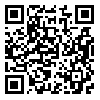Volume 3, Issue 2 (2022)
2022, 3(2): 24-42 |
Back to browse issues page
Download citation:
BibTeX | RIS | EndNote | Medlars | ProCite | Reference Manager | RefWorks
Send citation to:



BibTeX | RIS | EndNote | Medlars | ProCite | Reference Manager | RefWorks
Send citation to:
Alikaei S, Nouri S. Identifying and Analyzing Spatial Qualities Affecting Students' Creativity in the Educational Environment. Urban Design Discourse a Review of Contemporary Litreatures and Theories 2022; 3 (2) :24-42
URL: http://udd.modares.ac.ir/article-40-62499-en.html
URL: http://udd.modares.ac.ir/article-40-62499-en.html
1- School of Urban Planning, College of Fine Arts, University of Tehran, Tehran, Iran
2- Department of Architecture, Kermanshah Branch, Islamic Azad University, Kermanshah, Iran. ,ali_nouri@iauksh.ac.ir
2- Department of Architecture, Kermanshah Branch, Islamic Azad University, Kermanshah, Iran. ,
Abstract: (1999 Views)
Objectives: Based on external factors affecting creativity, and since creativity is a practice that is learned from the environment and is influenced by environmental conditions, the educational environment as a container in which teaching and learning takes place is very important in teaching and fostering creativity. The purpose of this study is to identify the spatial qualities affecting students 'creativity in the educational environment from the students' point of view and its analysis based on a review of theoretical foundations.
Methods: The Conventionat qualitative Content Analysis method and MAXQDA software have been selected as the analysis tool to analyze the data obtained from semi-structured interviews with students and to compile spatial components affecting creativity.
Findings: The research findings have identified seven spatial qualities including stimulation, flexibility, connection with nature, diversity of behavioral domains, unity, comfort and sensory richness as effective components on the emergence, promotion and continuity of creativity and their explanatory characteristics.
Conclusion: The results show that creativity is not a function of specific time and place and predetermined needs, and people prefer quality based on their specific moods and needs for each stage of the creative process. What is important here is the existence of a wide range of environmental capabilities that can meet the needs of students in navigating the creative process. An environment that can allow them curiosity, ideation, thinking, interaction, initiative, fluidity, flexibility and other components of creativity.
Article Type: Original Research |
Subject:
Art and Creativity in the City
Received: 2022/06/27 | Accepted: 2022/07/3 | Published: 2022/09/1
Received: 2022/06/27 | Accepted: 2022/07/3 | Published: 2022/09/1
Send email to the article author
| Rights and permissions | |
 |
This work is licensed under a Creative Commons Attribution-NonCommercial 4.0 International License. |







